Improved maize varieties for Oaxaca
Following on from the story “Improved seed reaches the Pacific” in issue 1750 of the Informa, we would like to recognize the hard work of all those involved in the project “Modernization of maize production in Oaxaca with adapted maize cultivars to increase yields”. The project aims to help farmers in the coastal, Papaloapan and Mixtecas regions of Oaxaca to access and produce improved maize cultivars through a participatory maize breeding (PMB) initiative, and to ensure the in situ conservation of maize diversity. The project was initiated in 2009 and is a collaboration between CIMMYT and the research extension services of the Autonomous University of Chapingo’s South Regional Center (CRUS-UACh) in Oaxaca. It is led by Suketoshi Taba in CIMMYT and Humberto Castro in CRUS-UACh, with the participation of Víctor Chávez of CIMMYT and Eliud Oliva and Iván Vásquez of CRUSUACh, and other staff of both institutions.
Drawing on a diverse gene pool, pre-breeding work at CIMMYT’s maize germplasm bank produced breeder seed of improved open pollinated varieties (OPVs) and inter-variety hybrids (IVHs). Project partners at CRUS-UACh produced declared seed (an intermediate category in the national seed system with less purity than certified seed) of these cultivars and delivered them to farmers, along with promising cultivars from other Mexican institutions and landraces collected from the communities. In addition to evaluation at CIMMYT, many trials, demonstration plots, and seed increase nurseries have been planted in farmers’ fields in different maize-producing regions in Oaxaca. The best-performing cultivars have been increased to make seed available to farmers and to the germplasm banks for conservation and enhancement. Unlike landraces, the improved varieties have genetic traits that allow mechanization and adoption of modern maize production practices, and high yield potentials similar to commercial hybrids.
The PMB approach has captured the attention of many farmers, students, extension workers, and government personnel who have participated in the project. It has proved its worth as an alternative approach to providing useful exotic germplasm to small-scale farmers in Oaxaca, linking them with public maize research and breeding without generating intellectual property rights claims. It can help in the evolution and conservation of local cultivars through crossing with new germplasm by farmer breeders as well as participating researchers. Farmers’ systems of seed exchange within social networks can operate for the adapted cultivars produced through PMB just as they do for other varieties. As a mark of the project’s rapid success, in the last two years 74 tons of seed have been produced and delivered to farmers for grain, forage, and elote (green ear) production.
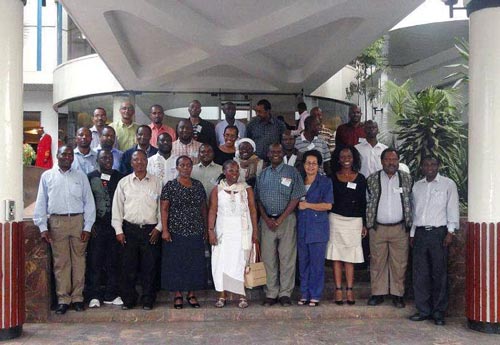 SIMLESA strengthens project monitoring and evaluation capacity. A Monitoring and Evaluation (M&E) Workshop was held in Nairobi, Kenya, during 13-17 June 2011 as part of the Sustainable Intensification of Maize-Legume cropping systems for food security in Eastern and Central Africa (SIMLESA) project. It was facilitated by a team from the Association for Strengthening Agricultural Research in Eastern and Central Africa (ASARECA) and led by Enock Warinda.
SIMLESA strengthens project monitoring and evaluation capacity. A Monitoring and Evaluation (M&E) Workshop was held in Nairobi, Kenya, during 13-17 June 2011 as part of the Sustainable Intensification of Maize-Legume cropping systems for food security in Eastern and Central Africa (SIMLESA) project. It was facilitated by a team from the Association for Strengthening Agricultural Research in Eastern and Central Africa (ASARECA) and led by Enock Warinda.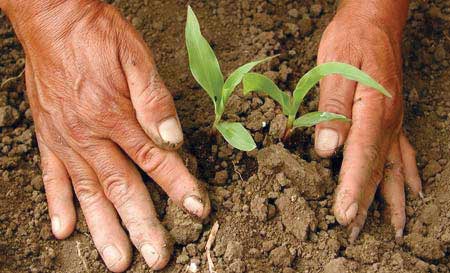 A new era began this week with the launch of the CGIAR Research Program MAIZE, a US$170 million global alliance to expand and accelerate research into maize, on 06 July 2011. The announcement was made during a celebration of the CGIAR’s 40th birthday, held at the World Bank headquarters in Washington, marking a new direction for the CGIAR and demonstrating that after four remarkable decades it remains vigorous and committed to addressing emerging challenges.
A new era began this week with the launch of the CGIAR Research Program MAIZE, a US$170 million global alliance to expand and accelerate research into maize, on 06 July 2011. The announcement was made during a celebration of the CGIAR’s 40th birthday, held at the World Bank headquarters in Washington, marking a new direction for the CGIAR and demonstrating that after four remarkable decades it remains vigorous and committed to addressing emerging challenges.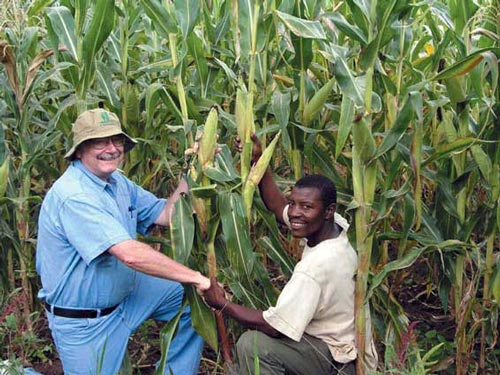 After a successful 37-year career and living on 4 continents, most people welcome retirement with open arms. Wayne Haag is not most people. Mission-oriented since childhood, the only question is, where will he end up next?
After a successful 37-year career and living on 4 continents, most people welcome retirement with open arms. Wayne Haag is not most people. Mission-oriented since childhood, the only question is, where will he end up next?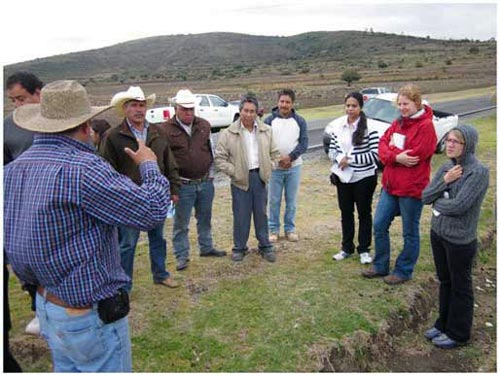 India has recently experienced a boom in cell phone use in the agricultural sector—disseminating information on anything from technology to agronomic practices, weather, or even market prices. Investigating this recent trend’s presence in Mexico, on June 26 a team of CIMMYT socioeconomists including Tina Beuchelt, Surabhi Mittal, Dagoberto Flores, and Jennifer Zehner visited the Chimalpa Valley in the municipality of Apan, state of Hidalgo, Mexico, an area largely known for being a barley production belt, to gauge the prevalence of cell phone use for agricultural purposes.
India has recently experienced a boom in cell phone use in the agricultural sector—disseminating information on anything from technology to agronomic practices, weather, or even market prices. Investigating this recent trend’s presence in Mexico, on June 26 a team of CIMMYT socioeconomists including Tina Beuchelt, Surabhi Mittal, Dagoberto Flores, and Jennifer Zehner visited the Chimalpa Valley in the municipality of Apan, state of Hidalgo, Mexico, an area largely known for being a barley production belt, to gauge the prevalence of cell phone use for agricultural purposes.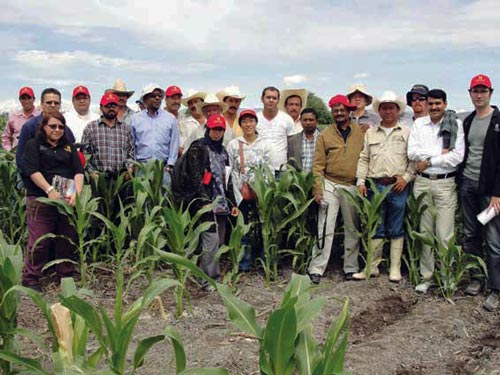 “It is very difficult to find conservation agriculture machinery. You have to go to China or India to get it,” said Mahesh Kumar Gathala, new CIMMYTBangladesh-based cropping systems agronomist for South Asia. Gathala, a native of India, was just one of the 15 participants invited to attend a five-week conservation agriculture course at CIMMYT-El Batán, Mexico, where improving machinery and professional capacity were hot topics.
“It is very difficult to find conservation agriculture machinery. You have to go to China or India to get it,” said Mahesh Kumar Gathala, new CIMMYTBangladesh-based cropping systems agronomist for South Asia. Gathala, a native of India, was just one of the 15 participants invited to attend a five-week conservation agriculture course at CIMMYT-El Batán, Mexico, where improving machinery and professional capacity were hot topics.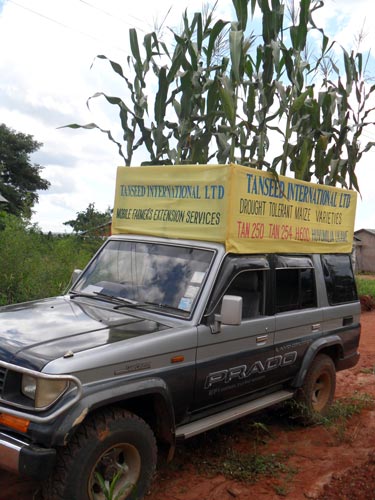 Staff of this Tanzanian seed company drove a vehicle topped with Tanseed drought tolerant varieties in potters through the city’s crowded streets during the nation’s Worker’s Day Celebration. The crowd cheered as the vehicle entered Jamhuri Stadium and passed in front of the chief guest, Tanzanian President Jakaya Kikwete. And because the event was televised live on three national stations, the message about drought tolerant maize was likely viewed by a large audience.
Staff of this Tanzanian seed company drove a vehicle topped with Tanseed drought tolerant varieties in potters through the city’s crowded streets during the nation’s Worker’s Day Celebration. The crowd cheered as the vehicle entered Jamhuri Stadium and passed in front of the chief guest, Tanzanian President Jakaya Kikwete. And because the event was televised live on three national stations, the message about drought tolerant maize was likely viewed by a large audience.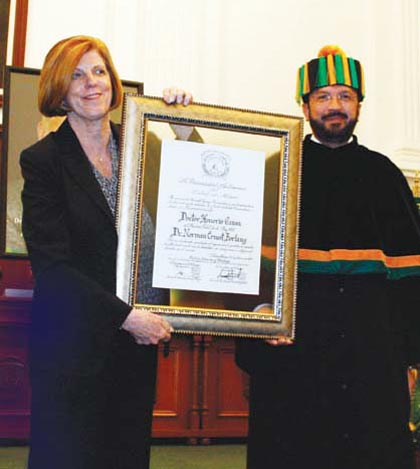 On Friday 29 April 2011, Nobel Prize Laureate and father of the Green Revolution, Norman E. Borlaug, was awarded an honorary doctorate (postmortem) from the Universidad Autónoma del Estado de Mexico (UAEM) for his lifelong work to improve modern agriculture.
On Friday 29 April 2011, Nobel Prize Laureate and father of the Green Revolution, Norman E. Borlaug, was awarded an honorary doctorate (postmortem) from the Universidad Autónoma del Estado de Mexico (UAEM) for his lifelong work to improve modern agriculture.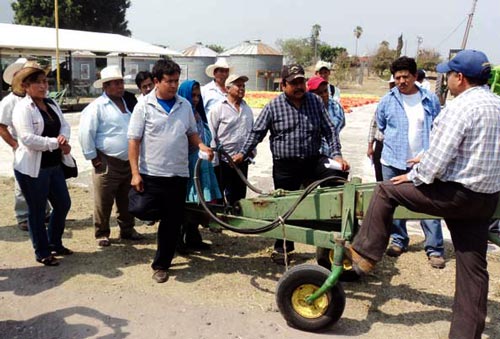 Óscar Bañuelos, superintendent at Tlaltizapán, began the course by welcoming all the participants. Bañuelos, who also attends Conservation Agriculture‘s technical certification course, applies CA technology throughout the season as a way to reclaim lots in disrepair and as an agronomic alternative to save on production costs.
Óscar Bañuelos, superintendent at Tlaltizapán, began the course by welcoming all the participants. Bañuelos, who also attends Conservation Agriculture‘s technical certification course, applies CA technology throughout the season as a way to reclaim lots in disrepair and as an agronomic alternative to save on production costs.